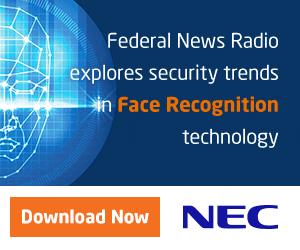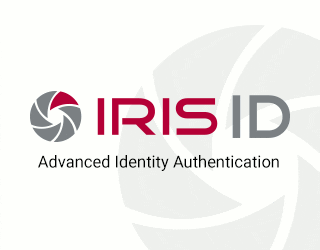Biometric border control is not a new concept. At its most basic level, in fact, border control has always been biometric, with authorities comparing travelers’ faces to the images in their passports and other identity documents. That work was done by humans, of course, but the technological sophistication that has been attained in the field of biometrics in recent years has opened up a new world of possibilities, and that has coincided with a growing fixation on border security in the wake of 9/11 and surging migration. This has all led to a huge amount of activity. If biometric border control was racing along the runway a few years ago, now it’s attaining liftoff.

Airports Offer a Launch Pad
 In the US, biometric border control has largely been spearheaded by the US Customs and Border Protection agency, in the wake of a 9/11 commission recommendation that government authorities establish a ‘Biometric Exit’ program that could more effectively keep track of who is leaving the United States. The CBP first started testing facial recognition technology on travelers at the Washington Dulles International Airport in 2015. The idea was simple: Use biometric technology to scan travelers’ faces, and to match them against the images in their passports. And it quickly showed promise, with the CBP moving that same year to test facial recognition technology at a land crossing, right at the US-Mexico border in Otay Mesa.
In the US, biometric border control has largely been spearheaded by the US Customs and Border Protection agency, in the wake of a 9/11 commission recommendation that government authorities establish a ‘Biometric Exit’ program that could more effectively keep track of who is leaving the United States. The CBP first started testing facial recognition technology on travelers at the Washington Dulles International Airport in 2015. The idea was simple: Use biometric technology to scan travelers’ faces, and to match them against the images in their passports. And it quickly showed promise, with the CBP moving that same year to test facial recognition technology at a land crossing, right at the US-Mexico border in Otay Mesa.
The next year, with the help of facial recognition technology provided by NEC, the CBP brought its facial recognition technology to another airport, New York’s JFK International Airport, around the same time that Congress approved an additional billion dollar in funding for the Biometric Exit program. That all paved the way for the CBP’s next big step in early 2017, when the agency laid out its Biometric Entry-Exit Program of Record, which would use a cloud-based facial recognition system to match passengers to their passport images as stored in flight manifests. And that’s more or less the system we now see proliferating: The CBP has brought its facial recognition system to numerous additional airports over the past several months, with the Mineta San José International Airport having recently become the first airport on the west coast to participate in the program. Washington Dulles, meanwhile – the airport where the CBP first implemented facial recognition for Biometric Exit – just launched face scanning for Biometric Entry.
Industry Gets Involved
 While government interests, exemplified in the CBP, have certainly been the key driver of the proliferation of biometric border control in the US, these government authorities have also found very willing partners in the private air travel sector. There are the participating airports, of course, whose administrators see potential efficiency advantages in automated biometric screening systems, not to mention whatever benefits may naturally result from close cooperation with government authorities. But airlines have also been getting onboard, showing particular excitement over the idea of tying biometric security screening to the larger boarding process: JetBlue, for example, started working with the CBP and IT services provider SITA in the spring of last year to trial a system that would replace their travel documents with face scans; and British Airlines became one of first foreign carriers to trial such a system later that year.
While government interests, exemplified in the CBP, have certainly been the key driver of the proliferation of biometric border control in the US, these government authorities have also found very willing partners in the private air travel sector. There are the participating airports, of course, whose administrators see potential efficiency advantages in automated biometric screening systems, not to mention whatever benefits may naturally result from close cooperation with government authorities. But airlines have also been getting onboard, showing particular excitement over the idea of tying biometric security screening to the larger boarding process: JetBlue, for example, started working with the CBP and IT services provider SITA in the spring of last year to trial a system that would replace their travel documents with face scans; and British Airlines became one of first foreign carriers to trial such a system later that year.
Meanwhile, a private sector organization called CLEAR has been promoting a parallel biometric border screening program based primarily on fingerprint scanning. Most of its efforts have revolved around a pre-screening system offered in collaboration with the Transportation Security Administration called TSA PreCheck, but CLEAR has also been working with Delta Airlines to trial biometric boarding based on fingerprint scans.
And then there are the industry associations helping things along. Addressing transportation ministers and related officials at this year’s International Transport Forum Summit, the head of the World Travel & Tourism Council urged authorities to work with the WTTC “to speed up the adoption of biometrics” in a bid to ensure that the travel sector can keep up with growth trends. The WTTC proceed to announce a partnership with the International Air Transport Association aimed at pursuing biometric passenger identity technologies. Also worth mentioning is the Consumer Technology Association’s urging of the Department of Homeland Security last year to consider more effective biometric screening technologies for air passengers, rather than banning the use of laptops and other devices during flights.
Beyond the US – and Airports
 While the US may be leading the charge toward biometric airport screening, it’s far from alone. Authorities in Peru recently expanded the biometric passenger processing system installed at Peru’s Jorge Chávez International Airport in 2016 with help from solutions provider Vision-Box, which also recently brought biometric eGates to the Buenos Aires Ezeiza International Airport; meanwhile authorities in Japan have been trialing biometric eGates, starting with Narita airport, the country’s main hub for international travelers; and Saudi Arabia’s General Authority of Civil Aviation contracted SITA last month for a modernization effort involving “biometric single-token travel”, according to that company. Iris recognition is playing a role, too, with Qatar’s Hamad International Airport having implemented such a biometric passenger screening system for Qatari residents last year, with iris scanning technology care of Iris ID. These are all just a few examples of initiatives of air travel authorities around the world.
While the US may be leading the charge toward biometric airport screening, it’s far from alone. Authorities in Peru recently expanded the biometric passenger processing system installed at Peru’s Jorge Chávez International Airport in 2016 with help from solutions provider Vision-Box, which also recently brought biometric eGates to the Buenos Aires Ezeiza International Airport; meanwhile authorities in Japan have been trialing biometric eGates, starting with Narita airport, the country’s main hub for international travelers; and Saudi Arabia’s General Authority of Civil Aviation contracted SITA last month for a modernization effort involving “biometric single-token travel”, according to that company. Iris recognition is playing a role, too, with Qatar’s Hamad International Airport having implemented such a biometric passenger screening system for Qatari residents last year, with iris scanning technology care of Iris ID. These are all just a few examples of initiatives of air travel authorities around the world.
And biometric border control is by no means restricted to airports. This summer, Canadian authorities started requiring biometric fingerprint and face data from visitors from Africa, the Middle East, and Europe, no matter how they come into the country – by plane, ship, or through the US border – and they will expand this biometric screening to visitors from APAC and the Americas at the end of this year. This summer also saw Chinese authorities implementing face-scanning eGates at two checkpoints at the Shenzhen-Hong Kong border. American border authorities, meanwhile, have been testing out technology enabling them to scan faces through car windshields at the US-Mexico border, and have been urging their international allies to embrace biometric border security as well. The government has even bankrolled efforts to implement biometric border security in Mogadishu, Somalia, in a bid to thwart terrorists travelling through the region.
None of this has occurred without some obstacles, of course. A lack of international standards has slowed progress down – though there are multinational efforts to overcome that issue – and in countries like Australia and the US, biometric border programs have come under criticism from civil rights and privacy advocates. But for the CBP’s part, at least, the agency has organized dialogues with representatives of those groups, evidently recognizing that it’s in everyone’s interest to make sure biometric border systems comply with citizens’ rights and freedoms, and are welcomed by the public at large. The advantages of automated biometric border control remain clear – increasingly so, in the eyes government authorities and travel industry interests alike as they continue to develop and deliver these solutions. The proof is in the flurry of activity in the US and the world over, as biometric border control continues its ascent.
Government Biometrics Month is made possible by our sponsors: NEC Corporation of America & Iris ID
–
September 13th, 2018 – by Alex Perala








Follow Us